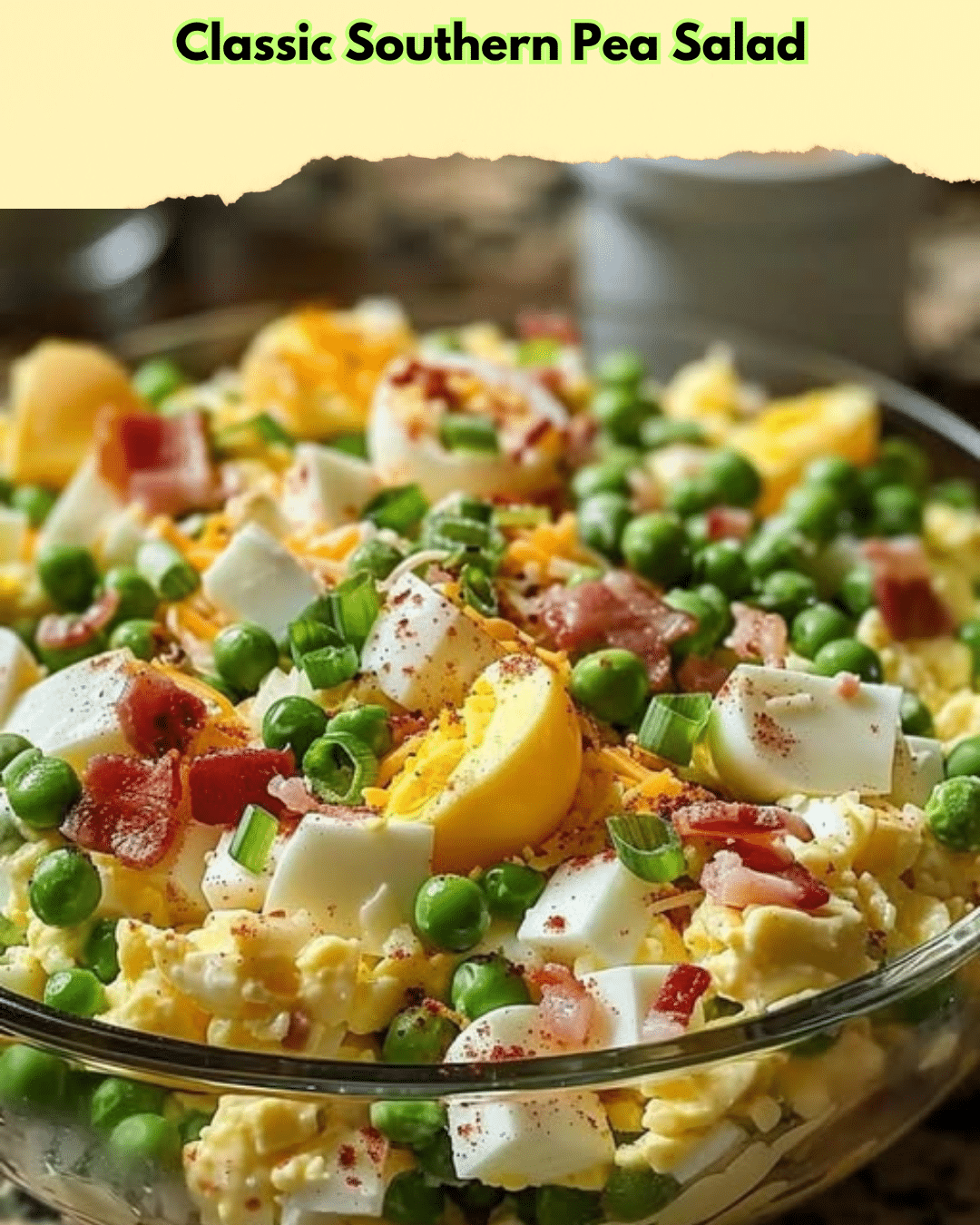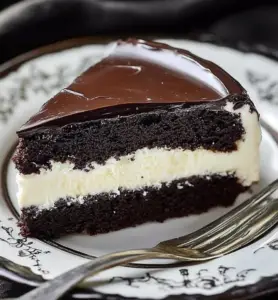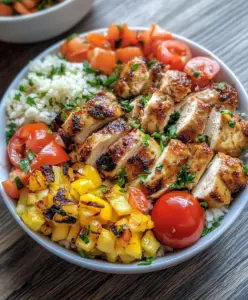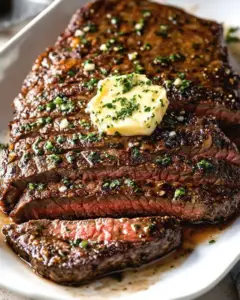Classic Southern Pea Salad: A Taste of Tradition
Southern cuisine is renowned for its comfort and soulful flavors, and this classic Southern Pea Salad is no exception. A renowned dish at gatherings and potlucks across the South, this salad combines the earthy goodness of peas with a creamy dressing that brings every bite to life. With crunchy vegetables and a touch of tang, it’s a perfect balance of textures and tastes that epitomizes Southern charm.
This Classic Southern Pea Salad is as visually delightful as it is delicious. The vibrant greens of fresh or frozen peas, the creamy pale dressing, and the dash of pink from diced bacon or ham create a colorful medley that’s hard to resist. It’s amazingly straightforward to prepare, making it a perfect choice for both novice cooks and seasoned chefs seeking a quick side dish with maximum flavor impact.
Quick Recipe Highlights
- Flavor Profile: The salad boasts a delightful mix of sweetness from peas and a tangy bite from the dressing, with additional savory depth from bacon or other optional add-ins.
- Texture: A delightful interplay of creamy dressing enveloping crunchy peas and crispy bacon creates a satisfying mouthfeel.
- Aroma: The aroma of fresh herbs and smoky bacon lends an inviting fragrance to this classic salad.
- Visual Appeal: Its colorful contrast of greens, pinks, and yellows provides an eye-catching presentation.
- Skill Level Needed: Easy enough for beginner cooks, requiring simple mixing and chopping.
- Special Equipment: A sharp knife for chopping and a mixing bowl are all that’s needed for this simple yet elegant dish.
Recipe Overview
- Difficulty Level: The classic Southern Pea Salad is rated as easy due to its straightforward preparation steps that require minimal cooking and culinary expertise.
- Category: A versatile dish, it fits perfectly as a side salad or appetizer at any meal.
- Cuisine: A celebration of Southern cuisine, this dish holds cultural significance in communal gatherings across the southern United States.
- Cost: Inexpensive and accessible, utilizing pantry staples and fresh peas, ensuring a budget-friendly creation.
- Season: Best enjoyed in spring and summer when fresh peas are at their peak, yet perfectly adaptable with frozen peas year-round.
- Occasion: Ideal for backyard barbecues, picnics, potlucks, or casual family dinners.
Why You’ll Love This Recipe
The Classic Southern Pea Salad is a delightful summer dish that celebrates the humble pea. Each bite is a burst of fresh, sweet pea accompanied by the subtle zing of the dressing. The creamy texture contrasts with the crispy bacon pieces and crunchy onion rings, creating a symphony of textures that dance on the tongue. This recipe captures the essence of Southern hospitality, welcoming all who share in its enjoyment.
Convenience is key with this simple to prepare salad, taking just 15 minutes from start to finish. With no cooking required, it’s a hassle-free addition to your meal plan any day of the week. The ease of preparation allows you to quickly assemble the dish and focus on other menu items, making entertaining a breeze.
Nutritionally, peas are the star, providing fiber, vitamins A and C, and other essential nutrients. This pea-centered salad not only satisfies taste buds but also delivers a dose of health, making it a balanced choice for those mindful of maintaining a nutritious diet.
Southern Pea Salad’s versatility means it pairs effortlessly with a variety of other summer dishes. Whether you’re hosting a backyard barbecue or preparing a laid-back lunch, this salad is a surefire hit that is certain to start conversations at the table.
Cost-effective and accessible, the salad relies on fresh or frozen peas and pantry ingredients readily available in most kitchens. Even the most cost-conscious cooks can appreciate this budget-friendly dish that doesn’t skimp on taste. Your wallet and taste buds will both be satisfied with this culinary classic.
Historical Background and Cultural Significance
The origins of Southern Pea Salad can be traced back to simple farm tables in the American South, where peas were a staple crop. This dish served as an efficient and tasty method of utilizing the bountiful legumes during the harvest season. Often enjoyed at community gatherings and celebrations, pea salad became synonymous with Southern charm and hospitality.
Southern Pea Salad holds cultural significance as it reflects the resourcefulness and creativity of Southern cooks. Over generations, the recipe has evolved, incorporating variations depending on available ingredients per region. What remains constant, however, is its cherished place in Southern cuisine, epitomizing the heartwarming essence of meals shared with loved ones.
Over time, the evolution of this dish has seen it transition from humble home kitchens to featuring in notable Southern restaurants. Although variations exist, such as adding a dollop of mayonnaise or creamy dressings and experimenting with spices, the core of simplicity and flavor remains uncompromised.
Regional variations of Southern Pea Salad result from differences in local ingredients. Coastal regions, for example, might add a splash of lemon for bright acidity, while inland culinary nuances might incorporate peppers or creamy cheese to add new dimensions to this classic recipe.
Ingredient Deep Dive
**Peas**: Peas are a central ingredient, providing sweetness and texture. Fresh peas symbolize spring and renewal in many cultures. Nutritionally, they are rich in vitamins A, C, and K, as well as fiber and protein, promoting heart health. Choose firm, bright green peas for the best quality. To store, refrigerate fresh peas in their pods or zip-top bags to retain freshness, or use frozen peas as a convenient substitute.
**Bacon**: Offering savory richness, bacon is a beloved ingredient in Southern cuisine. Historically a staple due to its preservation ease, it adds depth and complexity to this salad. Although not essential, bacon elevates the dish’s flavor profile. Opt for smoked or thick-cut bacon for a heartier bite. Store cooked bacon in the refrigerator and reheat gently, or use turkey bacon or vegetarian alternatives for dietary needs.
Common Mistakes to Avoid
- Avoid using canned peas; they lack the vibrant flavor and texture of fresh or frozen peas.
- Over-mixing the salad can crush the peas and result in a mushy texture.
- Not rinsing fresh peas properly can lead to an aftertaste from natural wax coating.
- Skipping on-season ingredients when possible; in-season produce offers superior taste.
- Under-seasoning is a common surefire way to produce a bland dish. Taste for balance.
- Allowing the salad to sit too long can lead to wilting vegetables and diluted dressing.
- Failing to chill the salad adequately; chilling enhances flavors and texture.
- Using overly complex dressings can overpower the simple fresh flavors of the peas.
Essential Techniques
**Blanching Peas**: While peas are often used directly from frozen, blanching fresh peas can enhance color and tenderness. Plunge peas into boiling water for a minute, then immediately cool them in ice water. This technique is pivotal for retaining the vibrant green color and firm texture essential for presentation and mouthfeel.
**Balanced Dressing Application**: Proper technique ensures peas are evenly coated without being overwhelmed. Gradually toss approximately half the dressing into the salad before adjusting to your preferred consistency. This approach helps avoid heavy flavors detracting from the peas’ natural sweetness.
Pro Tips for Perfect Classic Southern Pea Salad
1. Add texture contrast by mixing in toasted nuts or seeds right before serving.
2. Customize your salad by experimenting with different herbs, such as basil or mint, for a fresh take.
3. If preparing in advance, keep ingredients separate and combine them just before serving.
4. A pinch of sugar can enhance natural sweetness in fresh peas, tempering tangy dressings.
5. To achieve an evenly coated salad, use a gentle folding method rather than stirring.
6. Balance is key: taste-test as you mix to reach the perfect harmony of flavors.
7. For a lighter version, substitute yogurt-based dressing for mayonnaise.
8. Let the salad rest briefly after preparation to allow flavors to meld without losing crispness.
Variations and Adaptations
**Regional Variations**: Each Southern family has their own riff on this classic. Consider adding barbecue chicken to the mix for a smoky twist, or incorporate regional cheeses for depth—such as sharp cheddar or blue cheese crumbles for a stronger flavor boost.
**Seasonal Adaptations**: Swap out peas for seasonal produce, such as asparagus in spring, to keep the salad fresh in appeal. Add colorful diced bell peppers during summer to bring vibrant hues to your spread.
**Dietary Modifications**: Make the dish vegan by omitting bacon and using a vegan dressing. A low-fat version can utilize Greek yogurt instead of traditional mayonnaise.
**Flavor Variations**: Introduce new layers like jalapeños for heat or fresh peaches for a sweeter profile into the salad during peak harvest times, adjusting the dressing to maintain harmony.
**Texture Modifications**: Include crunchy elements like roasted chickpeas or croutons to contrast with the creamy dressing and soft peas, adding an unexpected delightful crunch.
**Presentation Alternatives**: Serve in fun mason jars or lettuce cups as a portable hors d’oeuvres at outdoor gatherings or brunch events to impress guests with creativity and style.
Serving and Presentation Guide
**Plating Techniques**: To enhance its appeal, serve the salad mounded high in a large shallow bowl or on individual plates for a sleek, contemporary feel. Garnish with fresh parsley or dill for a pop of color and flavor.
**Garnishing Ideas**: A sprinkle of freshly cracked black pepper and a drizzle of quality extra-virgin olive oil elevate presentation instantly, while leaving guests captivated by their elevated aroma and taste.
**Traditional Accompaniments**: Southern favorites like fried chicken or cornbread pair exquisitely with this light and flavorful salad, creating a harmonious culinary experience.
**Modern Serving Suggestions**: Incorporate this salad into lunchboxes or picnic spreads, then surprise your guests by rolling it into wraps with mixed greens for a portable meal option.
**Temperature Considerations**: This salad is best served chilled, making it refreshing and crisp during warmer months; however, a short period at room temperature adds a complexity and meld brings out deeper tastes.
**Portion Control Tips**: When serving as a side dish, aim to portion about half a cup per guest, offering add-ons like grilled meats or boiled eggs for protein supplementation.
Wine and Beverage Pairing
**Wine Pairings**: Serve this salad alongside a chilled Sauvignon Blanc whose citrus notes complement both the tangy dressing and naturally sweet peas for a wine match made in heaven.
**Non-Alcoholic Alternatives**: Herbal iced tea or a sparkling water infused with a hint of lime make refreshing no-alcohol options that cleanse the palate between bites.
**Coffee/Tea Pairings**: A delicate green tea can round off this salad as part of a sophisticated brunch, its subtle flavors mingling seamlessly without overshadowing the main event.
**Temperature Considerations**: Both wines and non-alcoholic beverages alike should be served adequately chilled, aligning with the salad’s refreshing nature.
**Serving Suggestions**: Use wide-rimmed glasses for wine and iced teas to present a layered, elegant touch alongside your laid-back Southern spread.
Storage and Shelf Life
**Storage Methods**: Store any leftover pea salad in an airtight container in the refrigerator to maximize its fresh taste. Salads dressed in advance should be consumed within a day for peak quality.
**Temperature Requirements**: Maintaining a cool temperature below 40°F is crucial for inhibiting bacterial growth and preserving your salad’s safety and texture over time.
**Container Recommendations**: Opt for glass containers, which avoid trapping undesirable flavors or food odors, ensuring the integrity of your dish isn’t compromised.
**Signs of Spoilage**: When refrigerating leftovers, look for signs like discoloration or off-smells. If detected, ensure prompt disposal to maintain health safety.
**Reheating Instructions**: Generally served cold, reheat any salad components used in warm serves separately before incorporating them for best results and textural quality.
**Freezing Guidelines**: Due to the creamy nature of the dressing and its component textures, freezing isn’t recommended as it can alter consistency and freshness.
Make Ahead Strategies
**Prep Timeline**: Assemble ingredients in separate containers and combine before serving to preserve freshness and quality.
**Storage Between Steps**: Dressings can be made ahead and stored, whereas nuts and vegetables prefer separation to avoid moisture degradation.
**Quality Impact Assessment**: Mixing the salad too early accelerates breakdown due to vinegar or acid-based dressings. Keep components separate when planning ahead.
**Assembly Tips**: Toss and plate just before serving for optimal taste, and reserve wooden or slotted spoons for gentle handling behind the scenes.
**Reheating Guidelines**: Dress any salad intended to be part of a hot meal only shortly prior, preventing wilting and modification of base vegetables.
**Fresh Element Additions**: Prepare delicate garnishes like herbs right before presentation to ensure a fresh-looking delight is maintained.
Scaling Instructions
**Halving the Recipe**: When cooking for a smaller crowd, simply halve ingredient quantities, ensuring same moisture balance along dressing addition.
**Doubling or Tripling**: Multiply base ingredients according to planned servings, applying seasoning again to individual preference after larger expansions, maintaining harmonious flavor.
**Equipment Adjustments**: Larger portions may require oversized mixing bowls and balance of commercial quantities with availability if scaling issues arise.
**Timing Modifications**: Especially when increasing volume batches, blend ingredients in increments to ensure effective emulsification and blending over smaller contents first.
**Storage Considerations**: Adequately proportion larger dish containers when anticipating leftover processing, relying on proper labeling especially in freezers when needed.
Nutritional Deep Dive
**Macro Breakdown**: Low in fat yet generous in flavor, peas are a fibrous energy source that supports any well-balanced diet.
**Micronutrient Analysis**: Iron, calcium, magnesium, and potassium are among the vitamins this salad delivers openheartedly, providing essential support for muscle, nerve, and heart function.
**Health Benefits**: Peas promote wellness through phytonutrients alongside antioxidants, fortifying immunity and antioxidative power on a cellular level.
**Dietary Considerations**: With adaptable sensibilities, Southern Pea Salad aligns with a myriad of popular dietary ideals spanning vegetarian needs to diabetic interests.
**Portion Analysis**: Include half-cup portions as supplementary side servings to manage caloric intake, appealing to those exploring weight maintenance successfully.
**Weight Management Tips**: Combine dressing cautiously, favoring lighter alternatives to enhance rather than veil pea-centric prominence for leaner dining scenes.
Dietary Adaptations
**Gluten-Free**: This salad is naturally gluten-free; however, check seasoning labels for potential gluten-based preservatives.
**Dairy-Free**: Utilize vegan mayonnaise or yogurt substitutes to craft a dairy-free version without loss of flavor integrity gracefully.
**Vegan**: Substitute bacon with plant-based alternatives such as tempeh or legumes, offering analogous texture and heartiness.
**Low-Carb**: Peas can be reduced in quantity, pairing the flavors with lean proteins for a complete meal complementary.
**Keto**: Minimize higher-carb elements like peas to conform to ketogenic stipulations, combining the essence with diverse greens.
**Paleo**: Embellished with paleo-friendly ingredients, ensure this salad complies by omitting any non-compliant preservatives, including mayonnaise additives.
**Low-FODMAP**: Adjust onions to avoid potential trigger reactions in prone individuals, aiming for digestive comfort.
Troubleshooting Guide
**Texture Issues**: Crisp textures arise from draining delicate components promptly and dressing within proximity to serving for minimized saturation risk.
**Flavor Balance**: Adjust salt and acidity to meld these contrasting elements into sophisticated resolution over cloying, overwhelmed notes.
**Temperature Problems**: Don’t over-chill peas as icy temperatures nullify flavors over enable enhancement across the board appeal.
**Equipment Challenges**: Larger batches demand careful accommodation on surfaces like mixing bowls or utensils during proactive preparation planning.
**Ingredient Substitutions**: When required, use equivalent component alternatives that reflect similar oils, substances, or flavors naturally matched within containing cuvées.
**Timing Concerns**: Assemble within plan to ensure ideal freshness retention, preventing oxidation risks from unnecessary exposure out of optimal readiness.
Recipe Success Stories
Engaged readers often share anecdotes, applauding this Southern classic’s simplicity and versatility during occasions like tailgating or sharing transformative family moments. Success lies in envisioning Southern Pea Salad’s tradition alongside contemporary inventiveness—all who gather appreciating its history across generations united in taste adventure.
Creative variations on this classic are celebrated, from incorporating spicy and tart elements through the addition of pickled onions to swapping out traditional components for less caloric foundations such as quinoa mixes or edamame beans swapped in lieu of sweet peas.
Photography Tips: Capturing a distinct visual flair requires natural lighting and vibrant colors, reflecting Southern Pea Salad’s timeless appeal both on screen and in person. Set against neutral backgrounds, this dish invites pyloric stimulus, balancing Southern elegance with earnest Southern charm.
Frequently Asked Questions
How can I store the Southern Pea Salad?
Store in an airtight container in the refrigerator for up to two days. Avoid leaving it unrefrigerated for extended periods to maintain freshness.
What can I substitute for bacon in the salad?
For vegetarians, consider using smoked tempeh or diced mushrooms for a similar texture and savory flavor without meat.
Can I use canned peas?
It’s not recommended since canned peas may lack the vibrant flavor and firm texture of fresh or frozen peas.
Is there a way to make this salad leaner?
Opt for a lighter dressing using Greek yogurt or use a vinegar-based dressing for reduced caloric content.
Can the dressing be made ahead of time?
Yes, prepare the dressing in advance and store in the fridge, tossing with the salad just before serving.
What’s a great non-alcoholic beverage pairing?
Pair with fresh herbal iced tea or sparkling lemonade for a refreshing complement to its flavors and textures.
How can I add more flavor depth?
Experiment with herbs such as dill or chives for enhanced taste, or add a touch of honey to balance the tanginess.
Can this be made vegan friendly?
Absolutely, by omitting bacon and using a vegan dressing alternative.
What occasions is this salad best suited for?
Perfect for picnics, barbecues, family gatherings, or any casual dining where shareable, easy-going dishes are welcomed.
How do I ensure my salad isn’t too watery?
Drain the peas and dressing thoroughly before combining to achieve a perfect consistency.
Can I add other vegetables?
Yes, diced red onions, bell peppers, or shredded carrots can add additional crunch and color.
Why is the pea salad popular in Southern cuisine?
Its ease of preparation and robust, satisfying flavors make it a beloved staple in Southern cooking tradition.
Additional Resources
For enthusiasts looking to expand their palate, consider exploring related recipes like classic cucumber salads or coleslaws that pair well with grilled meats and Southern-style entrees. Technique guides on perfect emulsification or understanding ingredients’ psyche can be pivotal reads, focusing distinctly on unlocking advanced culinary triumphs.
Ingredient guides offering insight into pea varietal selection develop awareness in adapting recipes to seasonal produce, while equipment recommendations ensure essential tools streamline success. Adaptations range infinitely, attuning not merely to dietary paths but widening culinary horizons through convergence of restaurant purification practices or innovative pageantry synthesized into everyday art.
Seasonal variations echo nature’s bounty. Converging tradition and innovation, home cooks should seek mood alterations via acknowledged conspiring foods. Each eagerly shares historical memory, invoking associated stories as aromatics entwined their lived experiences, either feasting within front yards or momentarily layered over simmering outdoor grills.
Print
Classic Southern Pea Salad
Description
A delightful and refreshing pea salad, perfect as a side dish for any southern meal.
Ingredients
For the Crust:
- 2 cups frozen peas, thawed
- 1/2 cup mayonnaise
- 1/4 cup chopped red onion
- 1/4 cup shredded cheddar cheese
- 1/4 cup chopped cooked bacon
- 2 tablespoons chopped fresh dill
- Salt and pepper to taste
Instructions
1. Prepare the Crust:
- In a large bowl, combine the thawed peas, mayonnaise, and red onion.
- Stir in the cheddar cheese, bacon, and fresh dill.
- Season with salt and pepper to taste, then chill for at least 30 minutes before serving.
Notes
You can customize the seasonings to taste.




